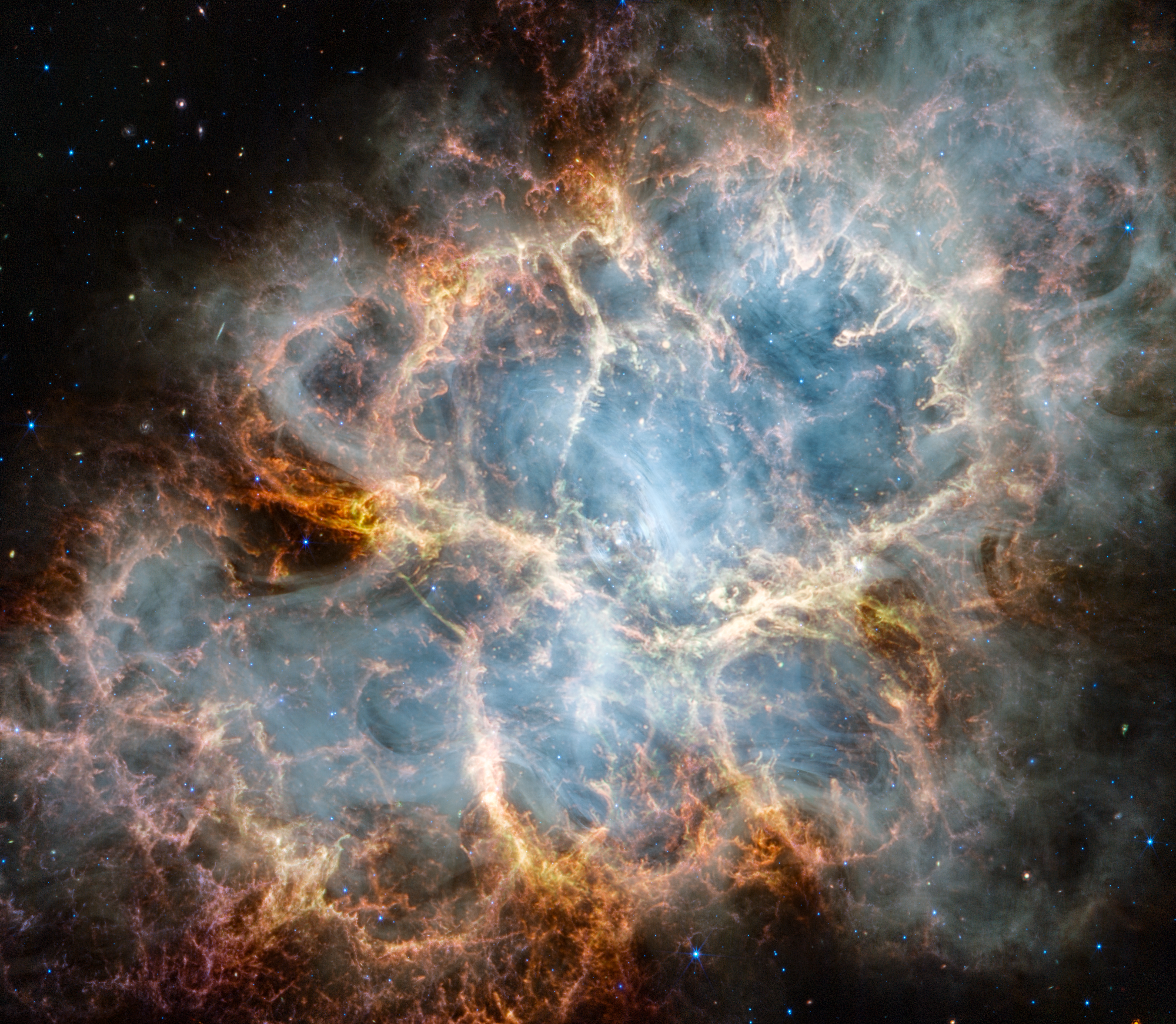Details from Webb’s Cameras Reveal Crabby Composition

The James Webb Space Telescope captures new details of the Crab Nebula, 6,500 light-years away, in this image released on Oct. 30, 2023. While these remains of an exploded star have been well-studied by multiple observatories, including the Hubble Space Telescope, Webb’s infrared sensitivity and resolution offer new clues into the makeup and origins of this scene.
Thanks to Webb’s Near-Infrared Camera (NIRCam) and Mid-Infrared Instrument (MIRI), scientists were able to determine the composition of the material ejected from the explosion. The supernova remnant is comprised of several different components, including doubly ionized sulfur (represented in red-orange), ionized iron (blue), dust (yellow-white and green), and synchrotron emission (white). In this image, colors were assigned to different filters from Webb’s NIRCam and MIRI: blue (F162M), light blue (F480M), cyan (F560W), green (F1130W), orange (F1800W), and red (F2100W).





